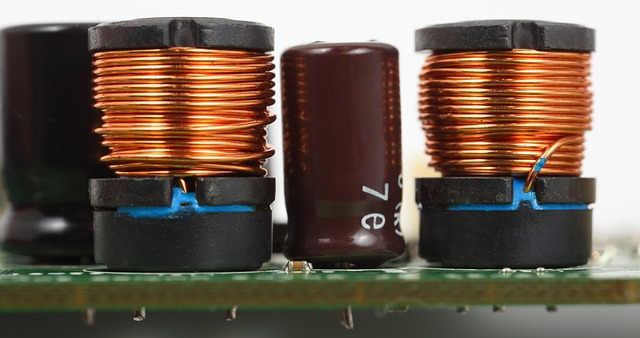What Is the Impact of 5G on the Internet of Things?
With its lightning-fast speeds and ultra-reliable low-latency connections, 5G is the game-changer the IoT ecosystem has been waiting for. Unlike its predecessors, 5G can handle an enormous number of devices all at once without breaking a sweat. Picture a crowded concert where everyone is trying to take photos or post updates. With 4G, the network might slow down, but 5G handles this traffic with ease, keeping your uploads speedy and smooth.
Moreover, 5G’s low latency means that the delay between sending and receiving data is drastically reduced. This is crucial for applications like autonomous vehicles, where split-second decisions are a matter of safety. The real-time responsiveness that 5G offers ensures that these vehicles can react instantaneously to their surroundings, significantly enhancing their safety and efficiency.
Another significant advantage of 5G for IoT is its ability to support massive data transfers. This is vital for smart cities, where everything from traffic lights to public transportation systems needs to communicate effectively. The enhanced bandwidth of 5G allows these systems to exchange large amounts of data quickly, improving overall urban management and efficiency.
In essence, 5G is the high-speed highway that will accelerate the development of IoT, making our gadgets smarter and our cities more efficient. As we delve deeper into the era of 5G, the ultimate potential for interconnected devices is bound to redefine our everyday experiences.
5G Revolution: How the New Network Technology Transforms the Internet of Things
So, what makes 5G so revolutionary? First, it’s all about speed and responsiveness. With 5G, devices communicate almost instantaneously. Picture a scenario where self-driving cars need to exchange information about traffic conditions; 5G ensures they do so in the blink of an eye, making roads safer and commutes smoother.
Next up is the concept of massive connectivity. Unlike its predecessors, 5G can handle a mind-boggling number of devices simultaneously. This means that everything from your smart thermostat to your home security system can be connected and functioning optimally without any lag. Think of it as upgrading from a crowded highway to an open superhighway where traffic flows effortlessly.
Also, 5G introduces ultra-reliable low latency communication (URLLC), which is a game-changer for applications requiring real-time responses, like remote surgery or augmented reality. It’s like having a direct line with zero interference, ensuring that critical data reaches its destination without delays.
Lastly, the efficiency of 5G extends to energy consumption. Devices on a 5G network can operate more efficiently, which is a win for both your energy bill and the environment. Imagine each device working like a well-oiled machine, using just the right amount of power to get the job done.
In essence, 5G isn’t just about faster internet; it’s about creating a seamlessly connected world where everything works together in harmony. This is the ultimate upgrade for the Internet of Things, turning futuristic dreams into present-day realities.
From Smart Homes to Smart Cities: The Impact of 5G on IoT Expansion
With 5G, the speed and responsiveness of connected devices are taken to a whole new level. Think of 4G as a busy highway with a few lanes, while 5G is an expansive freeway with multiple lanes, allowing data to travel faster and more smoothly. This rapid communication means your smart thermostat or security system can react almost instantly, making your home not just smart, but incredibly intuitive.
On a citywide scale, 5G transforms urban living. Imagine sensors in traffic lights that adjust in real-time based on traffic conditions, or waste management systems that signal when bins are full. The connectivity 5G provides supports a vast number of devices working together seamlessly, leading to more efficient and responsive city services.
Consider the possibilities: with 5G, autonomous vehicles can communicate with each other and with infrastructure to navigate more safely and efficiently. Public safety is enhanced with real-time data from surveillance cameras and emergency response systems. Even energy grids become smarter, adjusting power distribution based on real-time usage and weather conditions.
5G’s low latency and high bandwidth make it the backbone of an interconnected world where technology works in perfect harmony. As smart homes evolve into smart cities, the efficiency and convenience of our daily lives are set to skyrocket, all thanks to this transformative technology.
Exploring the Synergy Between 5G and IoT: What Does the Future Hold?
The synergy between 5G and IoT is transforming how we interact with technology. 5G, with its lightning-fast speeds and low latency, acts as the high-speed highway that connects a multitude of devices seamlessly. On the other hand, IoT (Internet of Things) refers to the web of interconnected devices that communicate and make smart decisions independently. When these two forces combine, they create a network where devices are not just connected but are able to share and act on information in real-time.

But the magic doesn’t stop there. With 5G’s enhanced capacity, IoT devices can become more sophisticated and prevalent. Imagine augmented reality (AR) applications that offer interactive experiences without lag, or autonomous vehicles that communicate with each other to avoid collisions and navigate efficiently. This level of integration promises not only a more connected world but also a smarter and more responsive one.
As 5G networks expand and IoT devices become more prevalent, we’re moving towards a future where our digital and physical worlds are seamlessly intertwined. The potential is enormous, and it’s exciting to think about how this dynamic duo will continue to evolve, reshaping our lives in ways we’re just beginning to imagine.
How 5G Is Accelerating the Growth of the Internet of Things
First off, 5G is like the high-speed highway for data. It dramatically increases internet speeds, cutting the time it takes for devices to exchange information. Picture your smart home system; with 5G, your thermostat adjusts to your preferred temperature almost instantly as you enter the house. This rapid communication boosts efficiency, making smart devices even smarter.
Latency, or the delay before a transfer of data begins, is another area where 5G shines. Traditional networks can lag, but 5G brings latency down to mere milliseconds. This near-instantaneous data transfer is crucial for real-time applications like autonomous driving. Imagine cars on the road communicating with each other to avoid accidents—5G makes this possible with minimal delay.
Moreover, 5G supports a massive increase in the number of connected devices. Unlike its predecessors, it can handle a plethora of devices without breaking a sweat. This means your city’s traffic lights, environmental sensors, and even smart trash cans can all operate harmoniously, feeding data to a central system for better urban management.

